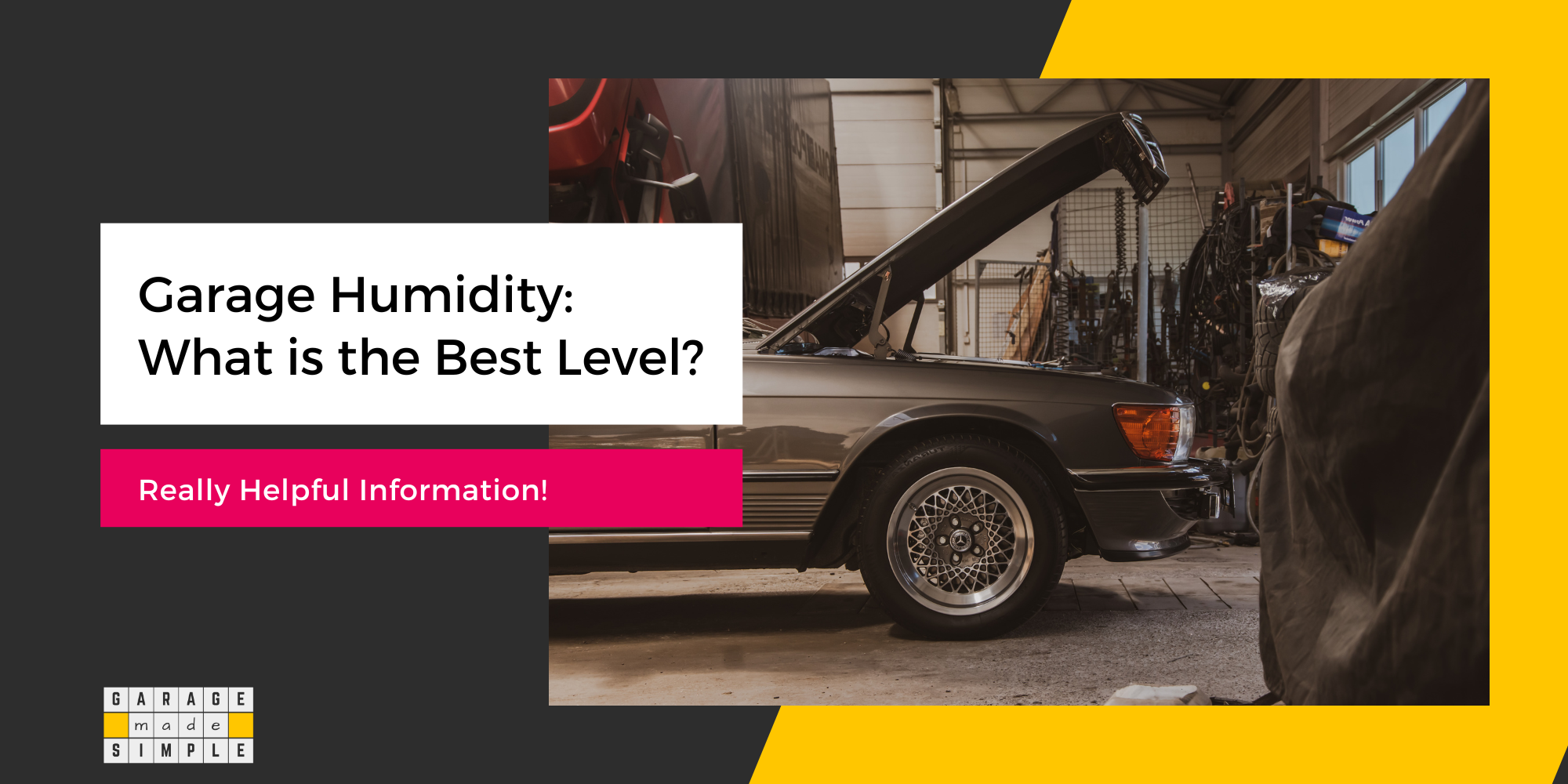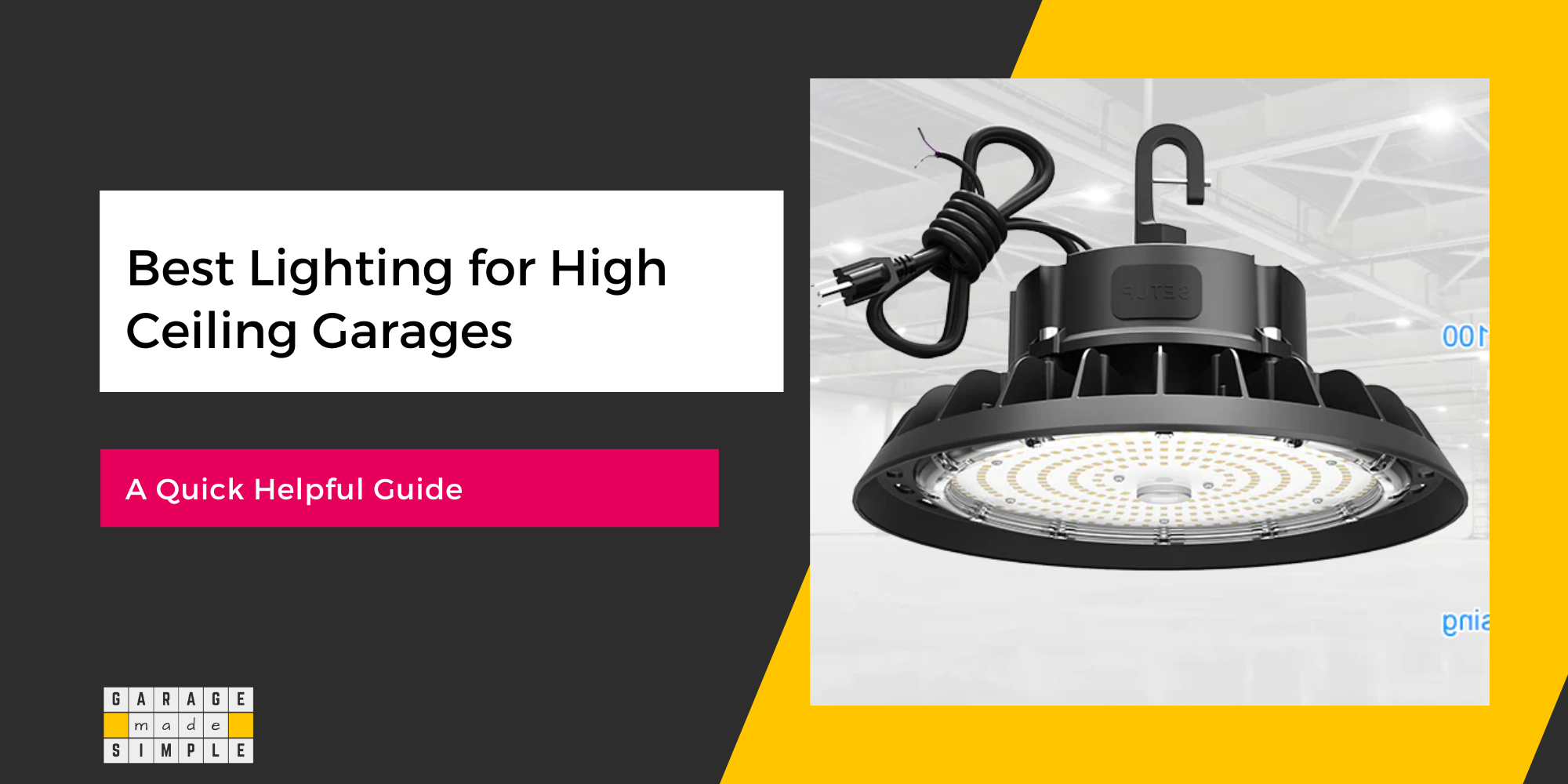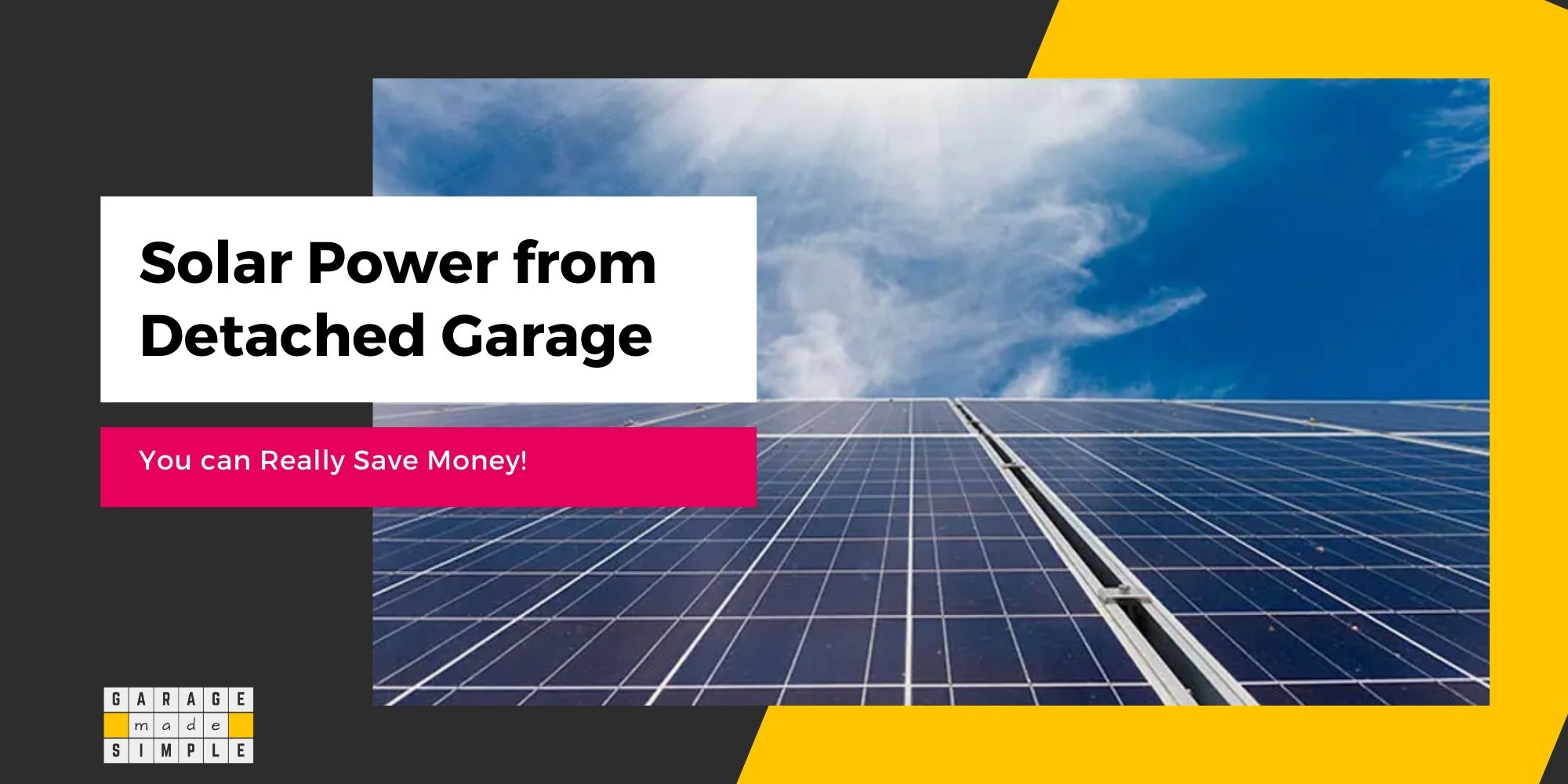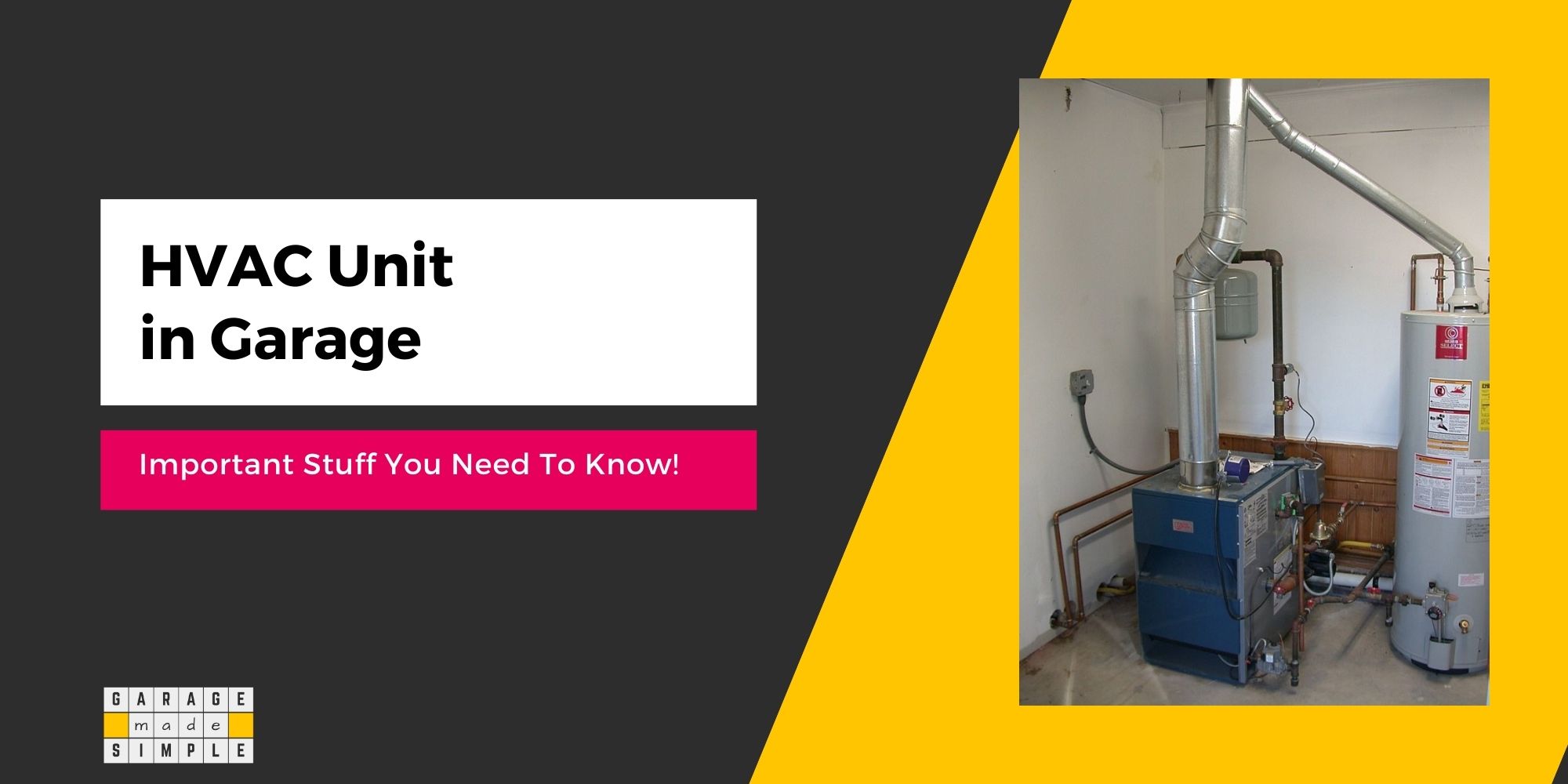Damp Garage Floor Solutions: How To Keep It Dry & Safe?
As an Amazon Associate, I earn from qualifying purchases.
How do I Stop Damp in my Garage Floor?
Do you find that your garage floor is often damp? In the morning, when it rains or in the winters? It is not unusual. Sometimes it is even referred as “garage floor sweating”. Many homeowners face this problem. In this post I will give you the best damp garage floor solutions. They are (at least some of them) simple and easy to implement.
Damp garage floor is caused by “condensation & capillary action”. The best damp garage floor solutions are to eliminate these two causes.
Condensation can be reduced by keeping the garage floor warm and reducing humidity in the air.
Concrete Sealers or Vapor Barrier Membranes can stop the damp rising up through capillary action.
In this post I will explain how condensation & capillary action work to make your garage floors damp (and possibly slippery & hazardous).
I will also explain how:
- Keeping the Garage Floor Warm
- Reducing Humidity in the Garage and
- Use of Sealers and Vapor Barrier Membranes
Are your Damp Garage Floor Solutions.
So let’s start.
Why do Garage Floors Sweat?
Is your garage floor wet in the morning, especially in the cooler spring or fall months? Damp Garage Floors can be very annoying, to say the least. You wonder why your garage floor sweats so much.

Your next door neighbor’s garage floor is not sweating, so why is your garage floor sweating? It certainly can’t be the weather, you think.
The answer to why your garage floor is damp, especially in the morning or on days when humidity is high, is actually very simple. It has to do with two very basic physical phenomena.
- Condensation
- Capillary Action
You need to determine whether your garage floor sweats due to condensation or capillary action or both. It is easy to find that out. I will show you how.
You really need simple and easy, yet effective, damp garage floor solutions because a wet garage floor is more than just annoying. Wet garage floors can become slippery. Slippery garage floors are a potential hazard as they increase the risk of falling and hurting yourself.
Water is also the worst enemy of concrete. It will break down and degrade the top layer of your concrete garage floor, a lot faster, than if the floor was kept dry. It will result in crumbling and dusty garage floors.
What causes Condensation on Garage Floors in Winter?
Why does your car windscreen fog up on cold mornings? Why does your cold soda can have beads of perspiration after being out of the fridge? Why do your eyeglasses go all misty when you blow on them?
The answer, in each case, is condensation.
The air (including your breath) always has some water vapor in it. Whenever we say that the air is humid, what we are really saying is that there is too much water vapor in the atmosphere.
“Condensation is the process where water vapor becomes liquid. It is the reverse of evaporation, where liquid water becomes a vapor. Condensation happens one of two ways: Either the air is cooled to its dew point or it becomes so saturated with water vapor that it cannot hold any more water.”
Source: National Geographic
Condensation is one part of the water cycle. Evaporation is the other.
Evaporation is the process of water changing its state from liquid to a gas (vapor) and entering the atmosphere.
Condensation is the reverse. Condensation is the process of water changing back from a gas (water vapor) to liquid water.
Condensation happens when warm humid air comes in contact with a cold surface such as a soda can or your garage floor. The air in contact cools down to below the dew point. The water vapor cools down and becomes liquid water droplets or dew on the cold surface.
In nature, condensation is the phenomena that creates mist, dew drops and rain. If it is really cold the water even freezes into snow or ice.
Back to damp garage floors. The sweat on your garage floor is not much different from dew drops on a grass meadow. Just that it’s not that pretty!
In cool weather, especially during night the temperatures outside drop. The ground below your garage gets pretty cold. Concrete is not a very good insulator. In fact it’s thermal conductivity is similar to that of glass. So your concrete garage floor gets pretty cold too!
However, the air in your garage is still warm. Mostly warm because of the heating that you have installed in the garage. But even without heating, the air is warm from the day before.
When warm air from the garage meets the cold concrete floor, condensation happens. A thin film of mist forms on the garage floor.
Your garage floor sweats and is damp!
Why is my Garage Floor Damp when it Rains?
Your garage floor can be damp when it rains. In fact it could become damp even if there is very high humidity in the air or there is a rise in the water level in a nearby lake or river. The dampness is coming from within the concrete garage floor by the process of “capillary action”.
When the grade below the concrete garage slab is saturated with moisture, water will “wick” up to the garage floor surface. A damp garage floor is indicative of:
- The grade is saturated with moisture.
- The water table level has risen considerably
- The garage foundation is not weatherproofed (or the weatherproofing has been breached)
- The French Drain around the garage perimeter, leading to the stormwater drain or drain to daylight. has been damaged and needs repairs
- The concrete garage slab does not have a moisture vapor barrier
The best damp garage floor solution, in this instance, would be to waterproof the garage foundation and install a perimeter French Drain. The “step by step” process has been explained by me in my post The Best Way of How to Waterproof Your Garage Walls.
Can Water come up through a Concrete Floor?
Yes, through Capillary Action.
Why does water get absorbed in sponge? Why does even the part of a towel that is not immersed in the water in the sink get wet? Why does water rise through roots, stems and upto the leaves in a tree?
The answer to all these is capillary action, also called capillarity or simply wicking. It is a result of two forces, cohesive and adhesive.
Both are intermolecular forces and can overcome the opposing gravitational force in a capillary (a narrow tube). Water will rise till the upward capillary action is balanced by the downward gravitational force.
“Capillarity is the result of surface, or interfacial, forces. The rise of water in a thin tube inserted in water is caused by forces of attraction between the molecules of water and the glass walls and among the molecules of water themselves. The narrower the bore of the capillary tube, the higher the water rises.”
Source : Brittanica
Capillary Action is the second reason your garage floor may be wet.
The ground below the concrete slab in the garage is always moist. The moisture level in the soil depends on several factors such as topography, climate, soil composition, surrounding vegetation etc.
The moisture content in the soil is higher during rains and if your home is near a large water body such as river, lake or ocean.
The soil itself is porous and so water tends to move up due to capillary action. Concrete is a composite building material made from fine cement particles and coarse sand grains and larger aggregates. The result is that the concrete is also porous.
If no vapor barrier has been used during the laying of the floor, the water from the ground will rise all the way to the garage floor surface, through the pores, because of capillary action.
This is why you may find that your garage floor is wet, especially in the rainy season. The water is not coming from the top; the water is coming in from below.
Damp Floor? Is it Condensation or Capillary Action?
OK, so you can see that your concrete garage floor is sweating and is damp, especially in the mornings.
You need Damp Garage Floor Solutions.
For the right solution you need to know whether the sweating is from condensation or capillary action. There are different solutions for each cause.
Here’s an easy way to find out.
Cut a one foot or two feet square of polyethylene sheet. The bigger the better. Lay this flat on your concrete garage floor. Smoothen it out to ensure there is little or no air between the sheet and the floor. Then tape all four sides to the floor using duct tape or similar.
Do this sometime in the evening. Check it out next morning.
First check the top side of the plastic sheet. Is it wet? If yes, your garage floor is sweating because of condensation. If no, condensation is not the problem.
Next rip the plastic sheet off from the floor and check the underside. Is it wet? If yes, then your garage floor is sweating because of capillary action.
In this case you may also find that the floor color under the sheet is a darker grey as compared to the surrounding area. That is because the moisture was trapped under the plastic sheet overnight.
Now that you know the real cause for the sweating or dampness of your garage floor you are ready to implement one or more of the right damp garage floor solutions.
How can you Prevent Condensation on the Garage Floor?
To reduce or prevent condensation on the garage floor, you need to ensure one or more of the following:
- Keep the concrete garage floor warm
- Keep the garage air as dry as possible
Floor Insulation
To keep the concrete garage floor warm you must insulate it. Apart from reducing sweating of the garage floor due to condensation, floor insulation will also make your garage more comfortable and liveable.
You can check out my blog post “How To Insulate Your Garage Floor And Save More!” on how to go about insulating your garage floor.
Insulating the garage floor basically means that your concrete floor will get a covering. This may be in the form of vinyl tiles, mats or rolls, laminates, carpets etc.
TIP: When insulating the concrete garage floor is not possible, you can still reduce condensation by creating a continuous airflow near the flow surface. Airflow ensures that the warm moisture rich garage air does not get too cold when it comes in contact with the concrete floor. If the air temperature does not fall below dew point then there will be no condensation.
Floor Heating
If you live in one of the northern states and face freezing winter conditions for several months then garage floor heating is not just an option. It is a necessity.
Buy an Electric Space Heater from Amazon to keep your garage floor warm during the cold winter.
Read my blog post Radiant Garage Floor Heating (Important Things You Need to Know) for more information on how to do it.
De-humidification
The amount of condensation depends on the amount of water vapor in the garage air. This is pretty straight forward.
If the moisture in the garage air is low it will stay in the air and not condense on the garage floor. Not unless the garage floor is really cold!
But if the garage air is loaded with water vapor then even a small temperature difference will initiate condensation.
A garage usually has a lot more water vapor than a similar sized room, say the basement. This is because of it’s big wide door. Every time it opens the moisture rich air from outside sweeps in.
You can reduce the dampness in the garage air by using a two step process. Park your cars inside the garage as early as possible. Shut the garage door and try not to open it till the next morning.
Then run your garage dehumidifier. The dehumidifier will reduce the water vapor present in the garage air.
You can check out Whirlpool 30 Pint Portable Dehumidifier on Amazon or the Honeywell 30 Pint Dehumidifier below.
TIP: Check all the seals on the garage door and make sure they are in good condition. Not much point in running a dehumidifier if outside air is leaking in through the joints.
How do I Stop Moisture Coming Up in my Concrete Garage Floor?
There are two ways to stop moisture from coming up in your concrete garage floor:
- Use a Sealer
- Use a Vapor Barrier Membrane
Moisture moves up from the grade below the concrete floor through capillary action.
A Sealer blocks the pores. A Vapor Barrier Membrane blocks access to the pores.
Does Sealing Concrete Stop Moisture?
Yes. Sealers are clear low viscosity liquids that can be applied to the garage floor with a low pressure spray.
Penetrative Sealers
Penetrative Sealers, as the name suggests, will penetrate into the concrete, seep into the tiny pores (capillaries), fill them up, solidify and block them. But they will not form any film on the surface.
Topical Sealers
Topical Sealers form a thin clear film on the surface of the concrete and prevents the water from entering the tiny pores (capillaries). Topical Sealers are somewhat similar to a clear top coat.
The sealer is a chemical. The most common & widely used sealers are:
- Silicon based
- Acrylic based
- Epoxy based
Rust-Oleum 301239 Moisture Stop is a Sealer that I would highly recommend. It effectively prevents moisture from coming up through concrete floors and strengthens & seals the concrete garage floor from the inside out.
If you are planning to put an Epoxy Coating, then the above is absolutely fine. If you are planning to install a subfloor such as DRICORE Subfloor R+ Insulated Panel, with Air Gap Technology, then also the above is fine because DRICORE has a polyethylene moisture barrier at the bottom.
Find out more about how Dricore Garage Floor Tiles Will Make You Save Money (Simple!).
Vapor Barrier Membrane
However, if you plan to install an Interlocking Vinyl Tiles then you should consider installing a Vapor Barrier Membrane underlayment first.
Ideally the Vapor Barrier Membrane should be installed sub grade at the time of pouring the garage concrete slab. The Vapor Barrier Membrane can also go over the concrete floor, but under the subfloor and the floor topping which could be tiles, planks, or mats.
Read my blog post Vapor Barrier For Garage Floor (10 Important Things You Need To Know) for more information.
Bottom Line
In summary, Damp Garage Floors occur either because of
- Condensation from the air above or
- Water rising from below due to capillary action
A simple test can be used to determine the cause for the sweating of your garage.
In case condensation is the cause you can reduce dampness of the floor by
- Insulating and Heating it to keep it warm
- Dehumidifying the garage air
In case capillary action is the cause you can reduce dampness by
- Sealing the floor
- Using a Vapor Barrier Membrane
Thank you very much for reading the post. I do hope you found it informative and useful.






